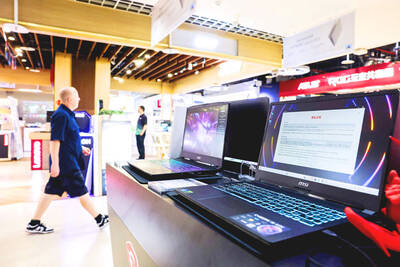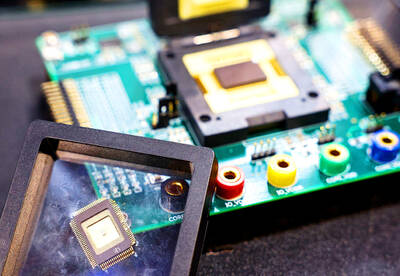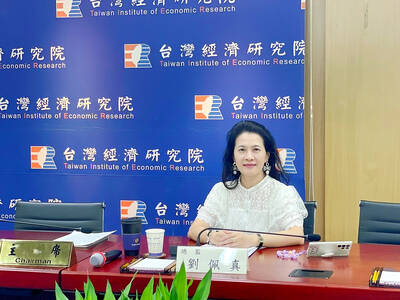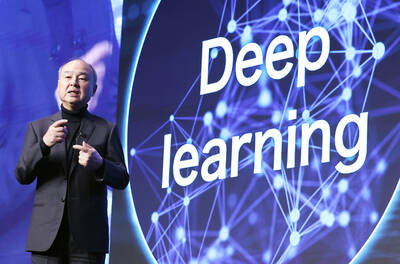The economic outlook for the Asia-Pacific region is relatively robust for next year, but the region's stock markets may face increasing pressure in the meantime, Standard and Poor's said yesterday.
The ratings agency said the region's equity markets would have less room to move up next year after their generally strong performances this year.
"The equity markets in Asia-Pacific are generally supported by the favored regional economic fundamentals ... but issues such as inflation and concerns over the US financial sector are likely to weigh on regional equity markets," Lorraine Tan (陳麗子), head of S&P's equity research team for the Asia-Pacific region, said in a teleconference call.
Tan's comments came as her agency released its 2008 Asia-Pacific Markets Outlook report.
Her remarks came as Japan's shares lost 2.02 percent, Chinese stocks plunged 4.85 percent and the TAIEX fell 3.90 percent, following Wall Street's overnight drop.
The S&P report said China would continue to be a key driver for regional economic growth and a catalyst for regional stocks, but warned that equity markets in the region are increasingly risky.
"2008 will be a more difficult year for stock market returns and we would not rule out the risk of a sharp correction," Tan said in a statement.
The report expects the so-called H-shares of Chinese firms listed in Hong Kong to continue to do well next year. It also predicts better performances for the markets in Hong Kong, South Korea and Thailand next year, while it was less optimistic about the Japanese market.
As for the TAIEX, which closed at 8,937.58 yesterday, S&P offered a "marketweight" recommendation for the index with a target of 10,000 points next year.
S&P also expressed caution on the prospects for credit quality for the regional corporate sector.
While the overall credit quality of Asia-Pacific companies has stood up fairly well to the recent liquidity crunch in short-term debt markets, this stance could be undermined next year by growing cost pressures and tighter access to funding, especially for firms whose risk profiles have been negatively affected by acquisitions and business expansions, S&P said.
As a result, more corporate defaults and credit downgrades are expected next year, it said.
"The balance of our rating outlooks on the corporate sector suggests there may be more rating downgrades than upgrades among Asia-Pacific companies in 2008," Ian Thompson, S&P managing director and chief regional credit officer, said in the teleconference.
"Casualties are expected, especially outside the financial sector," he said.
Taiwan's corporate credit outlook remained stable on the back of strong export performance, Ryan Tsang (曾怡景), S&P senior director for corporate and financial institution ratings, said in a statement.
However, the "overall credit profile of rated corporates in Greater China will become riskier as more high-yield issuers tap the market," he said.
Thompson expects the region's economies to grow more than 7 percent on average next year, with China growing at a rate between 10 percent and 10.5 percent. He forecast a 4.4 percent to 4.9 percent growth rate for Taiwan.

IN THE AIR: While most companies said they were committed to North American operations, some added that production and costs would depend on the outcome of a US trade probe Leading local contract electronics makers Wistron Corp (緯創), Quanta Computer Inc (廣達), Inventec Corp (英業達) and Compal Electronics Inc (仁寶) are to maintain their North American expansion plans, despite Washington’s 20 percent tariff on Taiwanese goods. Wistron said it has long maintained a presence in the US, while distributing production across Taiwan, North America, Southeast Asia and Europe. The company is in talks with customers to align capacity with their site preferences, a company official told the Taipei Times by telephone on Friday. The company is still in talks with clients over who would bear the tariff costs, with the outcome pending further

NEGOTIATIONS: Semiconductors play an outsized role in Taiwan’s industrial and economic development and are a major driver of the Taiwan-US trade imbalance With US President Donald Trump threatening to impose tariffs on semiconductors, Taiwan is expected to face a significant challenge, as information and communications technology (ICT) products account for more than 70 percent of its exports to the US, Chung-Hua Institution for Economic Research (CIER, 中華經濟研究院) president Lien Hsien-ming (連賢明) said on Friday. Compared with other countries, semiconductors play a disproportionately large role in Taiwan’s industrial and economic development, Lien said. As the sixth-largest contributor to the US trade deficit, Taiwan recorded a US$73.9 billion trade surplus with the US last year — up from US$47.8 billion in 2023 — driven by strong

A proposed 100 percent tariff on chip imports announced by US President Donald Trump could shift more of Taiwan’s semiconductor production overseas, a Taiwan Institute of Economic Research (TIER) researcher said yesterday. Trump’s tariff policy will accelerate the global semiconductor industry’s pace to establish roots in the US, leading to higher supply chain costs and ultimately raising prices of consumer electronics and creating uncertainty for future market demand, Arisa Liu (劉佩真) at the institute’s Taiwan Industry Economics Database said in a telephone interview. Trump’s move signals his intention to "restore the glory of the US semiconductor industry," Liu noted, saying that

AI: Softbank’s stake increases in Nvidia and TSMC reflect Masayoshi Son’s effort to gain a foothold in key nodes of the AI value chain, from chip design to data infrastructure Softbank Group Corp is building up stakes in Nvidia Corp and Taiwan Semiconductor Manufacturing Co (TSMC, 台積電), the latest reflection of founder Masayoshi Son’s focus on the tools and hardware underpinning artificial intelligence (AI). The Japanese technology investor raised its stake in Nvidia to about US$3 billion by the end of March, up from US$1 billion in the prior quarter, regulatory filings showed. It bought about US$330 million worth of TSMC shares and US$170 million in Oracle Corp, they showed. Softbank’s signature Vision Fund has also monetized almost US$2 billion of public and private assets in the first half of this year,